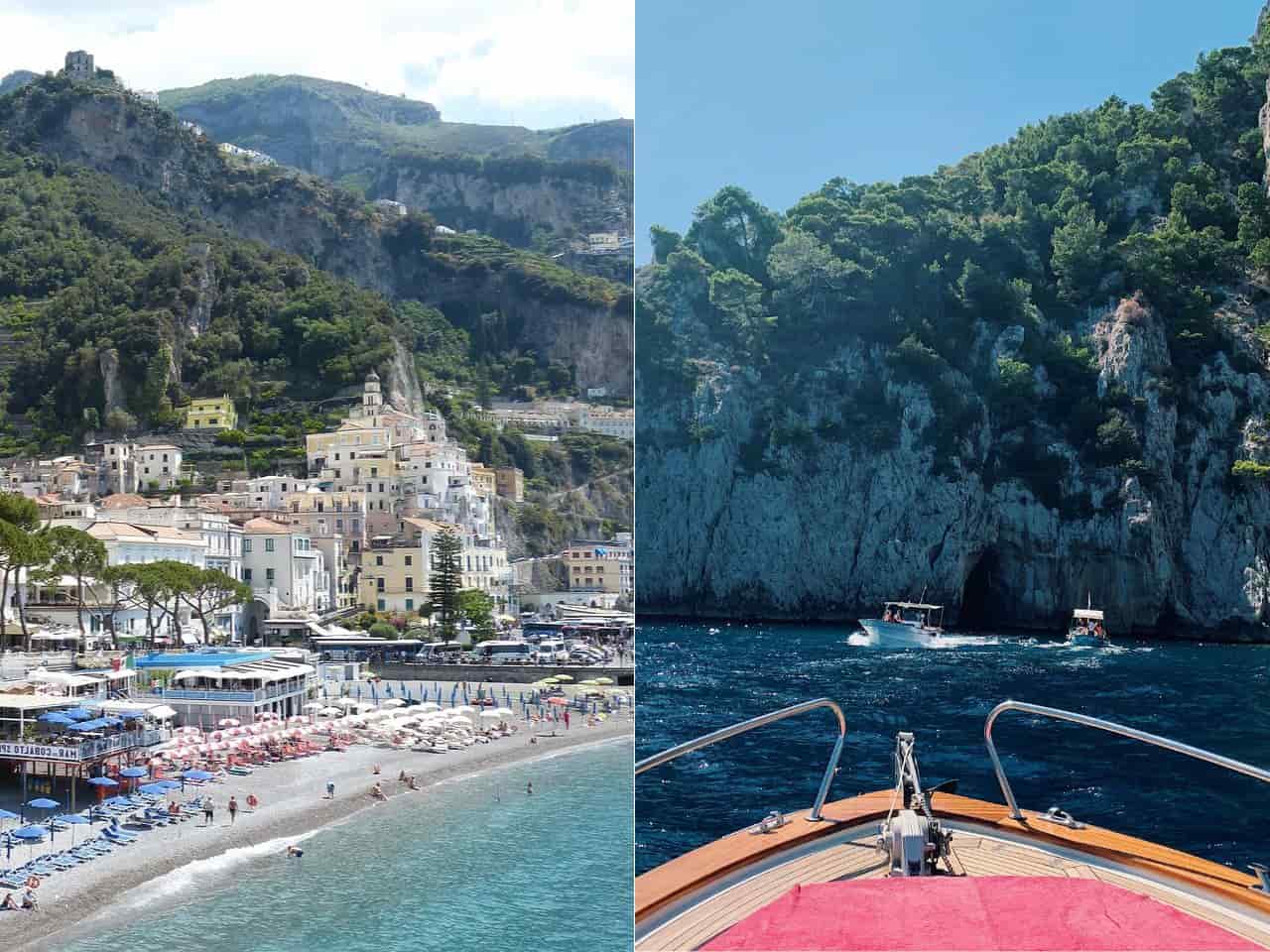Hey there!
As many of you loved my guide on the Amalfi Coast’s dreamy beaches, and excited for what’s next.
Now I’m here to share the best things to do on the Amalfi Coast – from hidden villages to mouth-watering bites and views you’ll never forget.
Think of this as your little roadmap for exploring Amalfi the way real Italians do—slow, joyful, and full of hidden surprises.
So let’s get started!
Love this? Don’t forget to check out Season-by-Season complete guide on Best time to visit Italy AND 29 Essential Italy Travel Tips to plan out your best Italian trip ever!
What Is So Special About The Amalfi Coast?
This UNESCO listed landscape – Amalfi Coast, is lined with small picturesque towns such as Positano, Amalfi, and Ravello, perched between mountains & the sea that is what makes it Special!
Close your eyes for a second and picture a ribbon of pastel towns clinging to dramatic cliffs, lemon trees perfuming the breeze, and the sea sparkling like a sheet of glass.
That’s the Amalfi Coast—and it’s unlike anywhere else on earth.
Life here moves to the rhythm of the sea!
Locals linger over espresso in tiny piazzas, fishermen unload their daily catch at dawn, and grandmothers roll out fresh pasta for family dinners.
Travelers quickly find themselves matching that gentle pace, savoring each moment instead of rushing through.
So, whether you’re hiking ancient trails, tasting sweet limoncello made from sun-soaked lemons, or watching the sunset from a quiet balcony, this place wraps you in a sense of timeless romance and wonder.
15 The Best Things To Do On The Amalfi Coast
1. Wandering the Streets of Positano
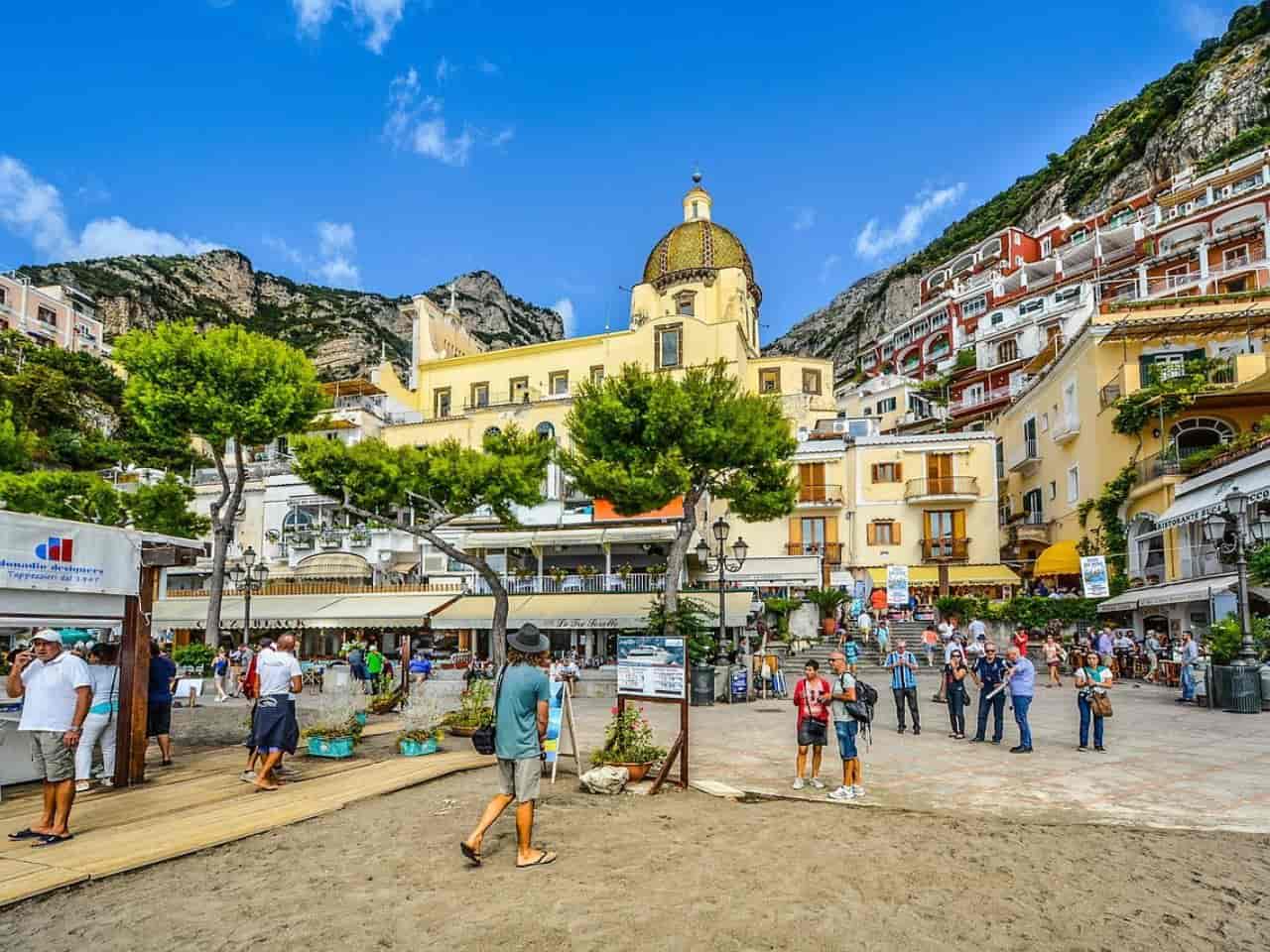
If there’s one place on the Amalfi Coast that feels like it was made for slow, dreamy strolls, it’s Positano. Picture a pastel-painted cliffside village where every tiny lane smells like lemons and freshly baked bread.
Trust me, just wandering here is an experience you’ll remember forever.
Positano sits almost halfway along the Amalfi Coast, about 16 km west of Amalfi town. It tumbles down steep cliffs to a sparkling pebble beach, with terraced houses that look like they’re stacked by an artist’s hand.
Historically, it was once a sleepy fishing village that blossomed into a glamorous holiday spot after the 1950s, when Hollywood stars and artists began vacationing here.
Old legends even say it was founded by Poseidon, god of the sea—pretty fitting for a place this breathtaking.
Best time of the day? Early morning is pure magic: cooler air, fewer crowds, and golden light for photos. Late evening strolls after dinner are just as lovely when the village glows with twinkling lights.
Don’t miss out trying their popular dishes like Lemon Granita, Seafood Pasta or Spaghetti alle Vongole, and Delizia al Limone which is a soft sponge cake filled with lemon cream—Positano on a plate.
Getting here is half the fun (and a bit of an adventure).
- By Bus: From Sorrento or Amalfi, hop on the SITA bus along the famous SS163 coastal road. The ride is twisty but the sea views will make you forget every curve.
- By Ferry: In high season, ferries run from Naples, Sorrento, Salerno, and Amalfi—smooth sailing and zero traffic jams.
- By Car/Scooter: Possible, but parking is scarce and pricey, so most visitors prefer public transport.
Pro Tip: Carry a refillable water bottle and some cash for small cafés.
2. Visit Amalfi’s Duomo di Sant’Andrea
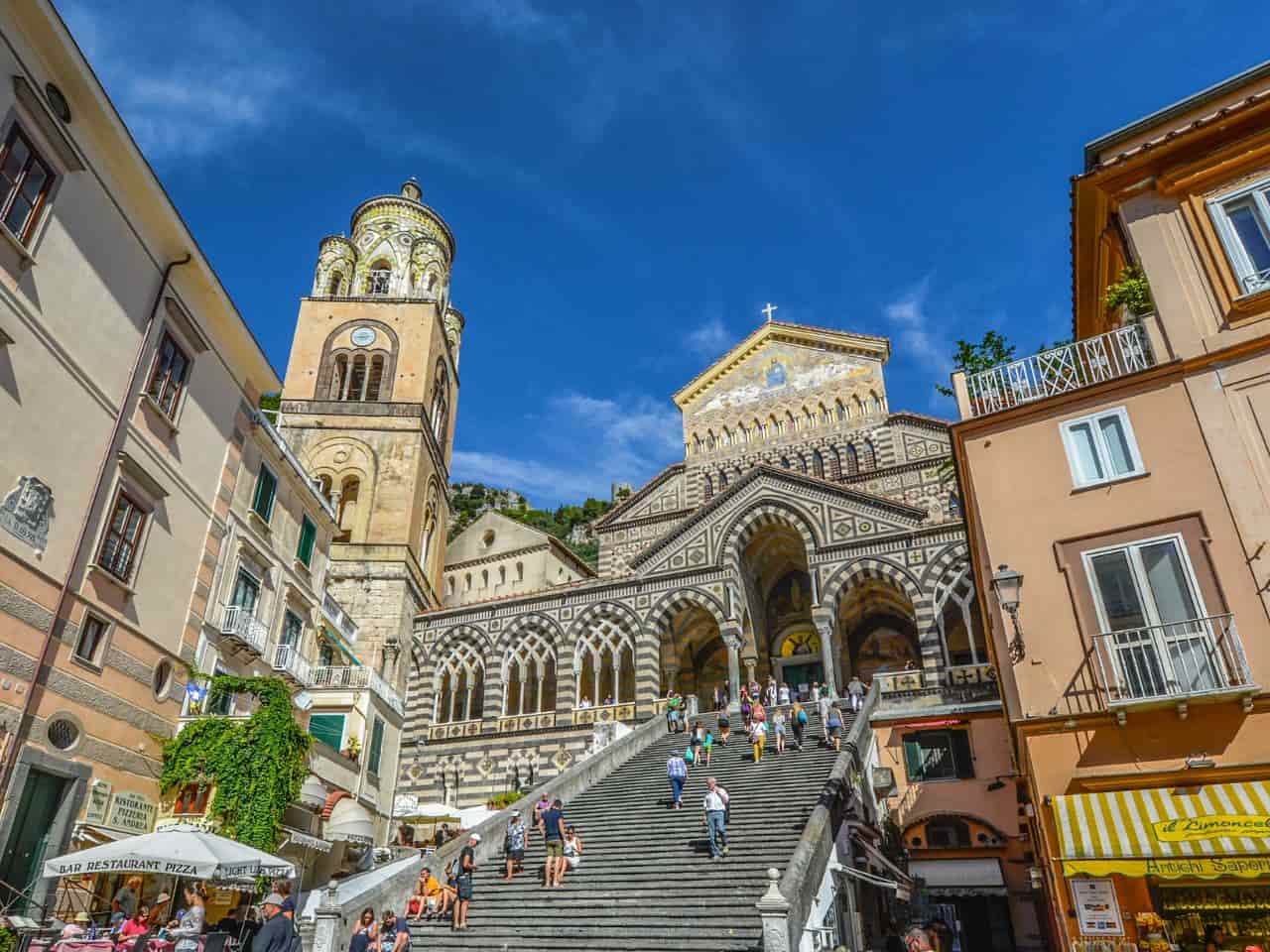
If you love a mix of history, art, and a little drama, Amalfi’s Duomo di Sant’Andrea will absolutely steal your heart. Imagine standing at the base of grand striped arches while bronze doors from centuries ago shimmer in the sun.
Step inside and it feels like time pauses—marble columns, glittering mosaics, and a hush that tells a thousand stories.
It dates back to the 9th century and was dedicated to Saint Andrew, the town’s patron saint. Over the centuries it absorbed Arab-Norman, Gothic, and Baroque touches, creating the layered beauty you see today.
The Duomo rises right in the center of Amalfi town, just a short stroll from the waterfront piazza. Its black-and-white façade and sweeping staircase make it impossible to miss.
You can bring a small camera or phone with good low-light settings to capture those breathtaking interior mosaics without flash.
Best time of the day? Aim for early morning before tour groups arrive or late afternoon when the setting sun casts a warm glow on the striped façade—perfect for photos and quiet reflection.
Don’t leave without sampling a chilled glass of local limoncello or a warm sfogliatella pastry from the cafés lining the piazza just outside. It’s the sweetest way to linger after your visit.
Pro Tip: Dress respectfully—shoulders and knees covered—as it’s an active place of worship.
3. Hike the Path of the Gods (Sentiero degli Dei)
Imagine hiking above the sea, stepping through rosemary and thyme, with cliffs dropping away to endless blue. It’s the kind of walk that changes you, even before you finish.
This trail stretches from Bomerano (in Agerola) down to Nocelle (above Positano). It runs along high ridges, offering spectacular views of the Amalfi Coast and even Capri in the distance.
Back in the times, this path was part of old mule trails used by locals to move between tiny villages. Over the years it’s become famous for its beauty—and for testing your legs in the most rewarding way.
If walking feels like a meditation and views make your heart skip a beat, then the Path of the Gods is the trail you don’t want to miss in your list of things to do on the Amalfi Coast.
Best time of the day? Get going early in the morning. The air is cool, the light soft, and you’ll beat most of the heat and the crowds. Mid-morning into early afternoon brings strong sun exposure, so later afternoons can be nice too—just watch daylight hours and weather.
Don’t miss out trying these along the way: pack some picnic supplies from Agerola—fresh fior di latte (a creamy mozzarella), focaccia, maybe some juicy fruit.
At the end, when you reach Nocelle, grab a cold lemon granita or a slice of cake with a sea view—it’s magic.
Getting here is part of the adventure:
- By Bus: Take the SITA bus from Amalfi to Agerola (to Bomerano). The stop Piazza Paolo Capasso is where most hikes begin. From Positano you can also catch buses up to Nocelle.
- By Car/Scooter: You can drive to Bomerano, but parking is very limited. The roads are winding and narrow. If you arrive late, parking might be full. Many prefer public transport for this reason.
Pro Tip: Wear good hiking shoes with grip. Bring at least 2 liters of water, a hat, sunscreen, and some snacks. Also, don’t forget a light layer (it can get windy or cool at higher points).
If you finish in Nocelle, either take the bus or carefully hike down the ~1,500 steps to Positano (only if your knees are ready!).
4. Cruise the Coast by Boat
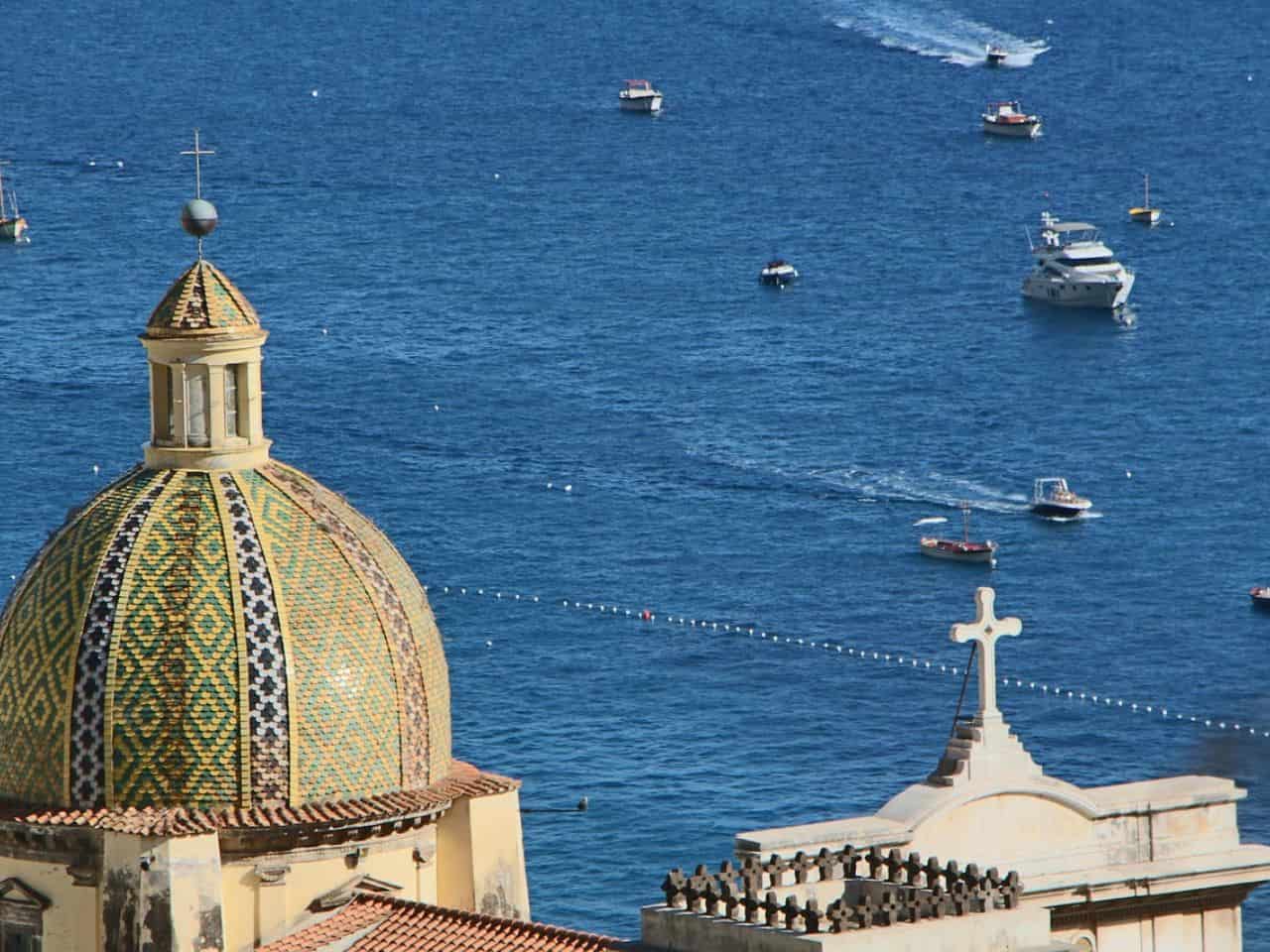
If there’s a way to truly feel the Amalfi Coast wrap around you, it’s by taking to the sea. Imagine the sun on your face, the gentle sway of a boat, and pastel villages clinging to cliffs rising from sparkling turquoise water. It’s not just sightseeing—it’s a sensory adventure that stays with you long after you dock.
Most boat tours and rentals depart from Amalfi, Positano, or Salerno. You can choose a private boat, a small shared tour, or a ferry that stops at multiple villages along the coast.
Amalfi was a maritime powerhouse, and sailing these waters was how merchants connected Europe to the Mediterranean. Every cove and cliff you pass echoes centuries of seafaring life.
Best time of the day? Morning departures give you calm waters and clear skies for photos, while late afternoon cruises catch golden light reflecting off cliffs—perfect for a romantic vibe or sunset shots.
Don’t miss sampling a light snack onboard: fresh focaccia, local olives, and a chilled limoncello are perfect companions to the breeze and waves.
Pro Tip: Bring sunscreen, a hat, and a waterproof bag for electronics. Even if you don’t swim, slipping your toes in the Tyrrhenian Sea while cruising is unforgettable.
5. Explore Ravello’s Villas and Gardens
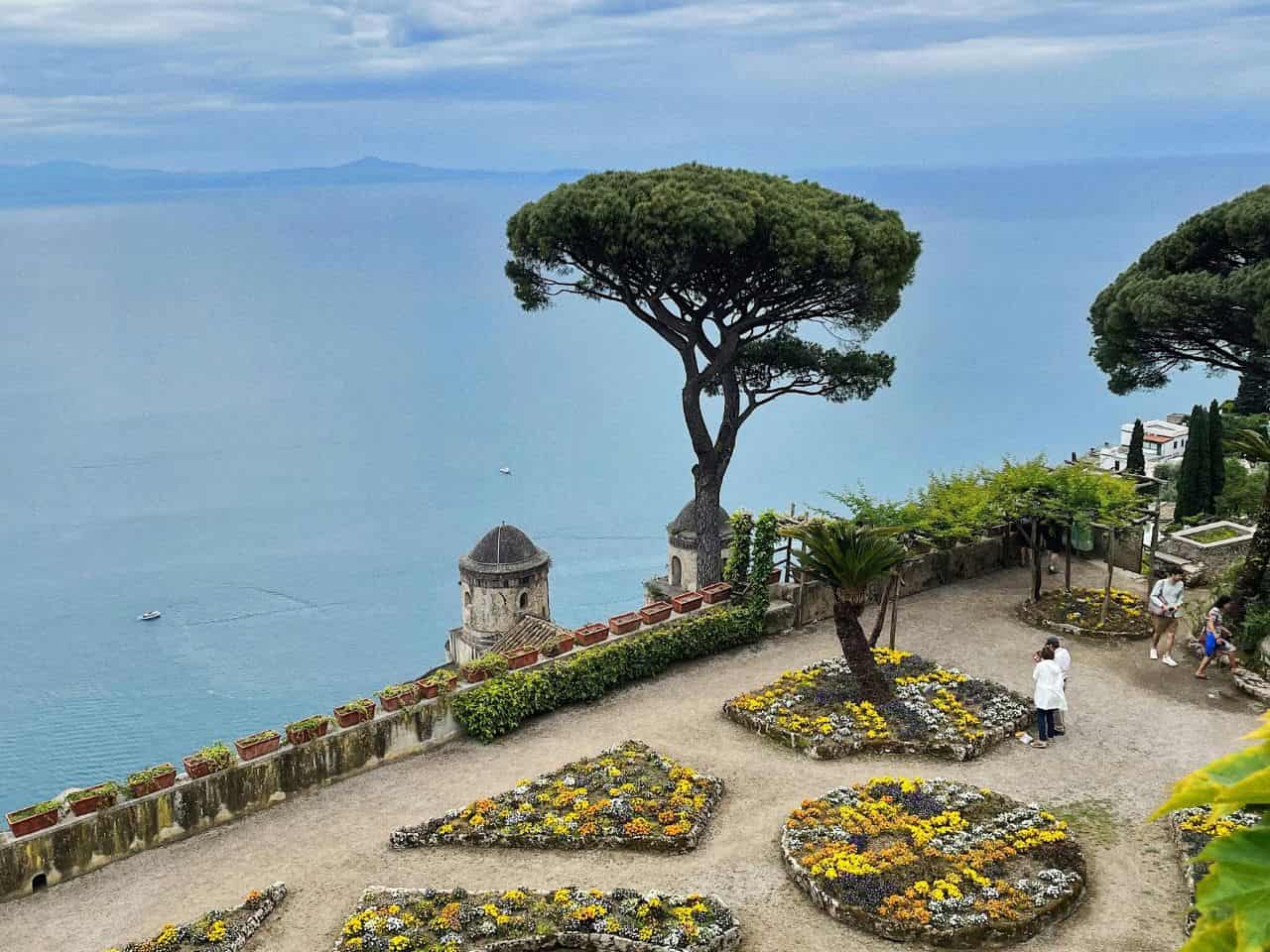
Picture terraces filled with flowers, sweeping views of the sea, and a quiet elegance that makes you want to linger for hours. Wandering through its villas and gardens feels like walking through poetry.
It sits high above the Amalfi Coast, about 350 meters above sea level, between Amalfi and Minori. From its terraces, you can see the entire coastline stretched out like a shimmering postcard.
This picturesque tiny village was a favorite retreat for wealthy Amalfi families and later inspired artists and composers, including Wagner, who found his muse in Villa Rufolo’s gardens. The villas here date back to medieval times, with layers of history etched into every stone staircase and ornate balcony.
Trust me, I can not write a list of best things to do on the Amalfi Coast without mentioning Ravello.
Best time of the day? Morning light brings out the colors of flowers and sea, while late afternoon offers a magical glow perfect for photos. Weekdays are calmer; weekends can get busy with tourists.
Don’t miss tasting some local delights after your stroll: a slice of lemon cake or a gelato from a nearby café makes sitting on a terrace even sweeter.
Getting here is straightforward:
- By Bus: SITA buses run from Amalfi, Positano, and Salerno directly to Ravello. The stops are a short walk from Villa Rufolo and Villa Cimbrone.
- By Car/Scooter: Drive up the winding SS373 road. Parking is available near the villas, but spaces are limited during peak season.
- By Foot: For the adventurous, you can hike from Amalfi to Ravello along scenic trails—but allow 1–2 hours for the climb.
Pro Tip: Wear comfortable walking shoes because the villas have uneven cobblestones and stairs. Bring a camera or phone for the stunning views, and pause on each terrace—you’ll want to soak it all in.
6. Taste Limoncello in Minori or Amalfi
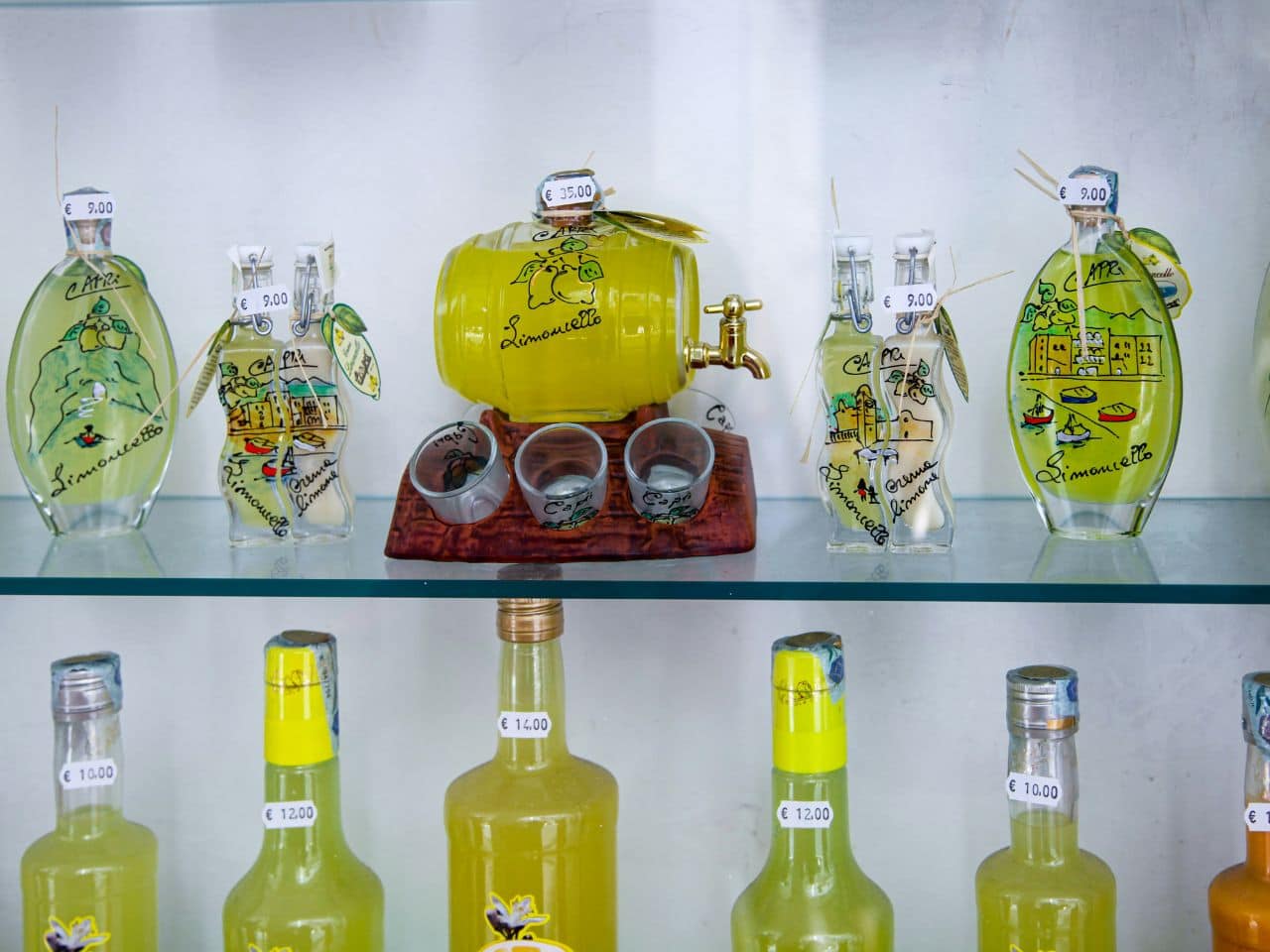
If there’s a flavor that instantly captures the Amalfi Coast, it’s Limoncello. Imagine sipping a bright, tangy, sun-kissed lemon liqueur while feeling the sea breeze on your face—it’s like tasting the coast in a glass.
You can find authentic Limoncello in towns like Minori and Amalfi, where family-run distilleries and cafés have been perfecting the recipe for generations.
Amalfi lemons, especially the famous Sfusato Amalfitano, have been grown here for centuries. Locals turned them into a refreshing liqueur that travelers quickly fell in love with, making it a symbol of the region.
Don’t miss sampling it straight from a family-run distillery, or pick up a bottle to take home—nothing tastes quite like Amalfi lemons. Pair it with a small lemon cake or biscotti for the full experience.
Pro Tip: Bring a small bag for bottles if you plan to buy, and always taste first! Some local cafés even offer complimentary lemon cookies or sweets to pair with your Limoncello tasting.
7. Relax on Marina Grande Beach
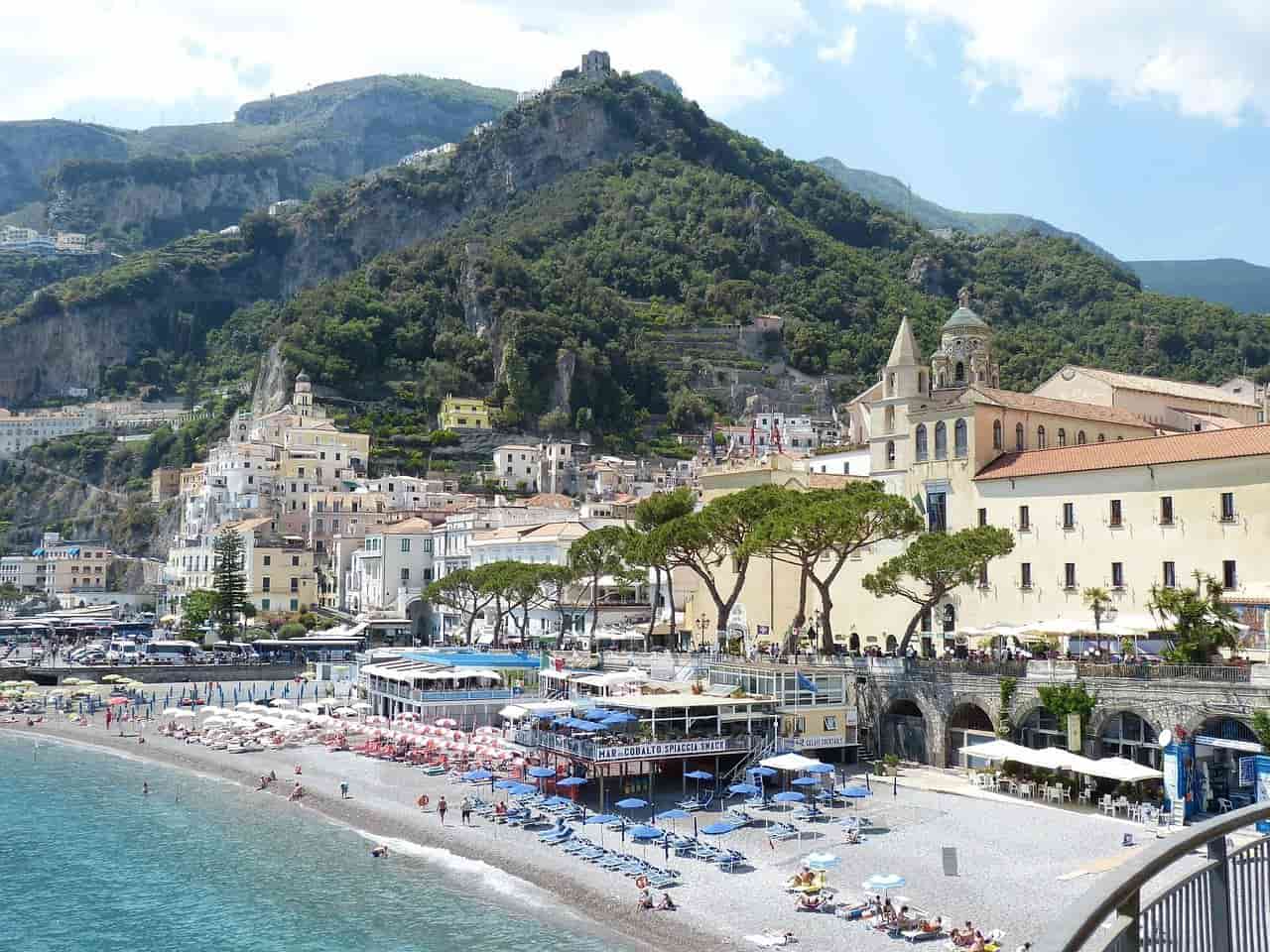
Marina Grande sits right at Amalfi’s main waterfront, just a short walk from the town center and the famous Duomo. Its central location makes it perfect for combining beach time with sightseeing.
You’ll have colorful umbrellas lining the pebbly shore, the scent of salt in the air, and boats bobbing gently in the sparkling water—it’s pure coastal bliss.
Back in the days, Amalfi was a bustling maritime hub, and Marina Grande served as a working harbor long before it became a favorite spot for sunbathers. Today, it balances lively activity with a relaxed seaside vibe.
Best time of the day? Early morning is serene and cool, perfect for a peaceful swim. Late afternoon and early evening are magical too, as the sun begins to cast golden hues over the cliffs and boats.
Have a fresh seafood snack at one of the beachside cafés or grab a gelato while you watch the world go by.
Check out these Beautiful Amalfi Coast Beaches that’ll steal your heart!
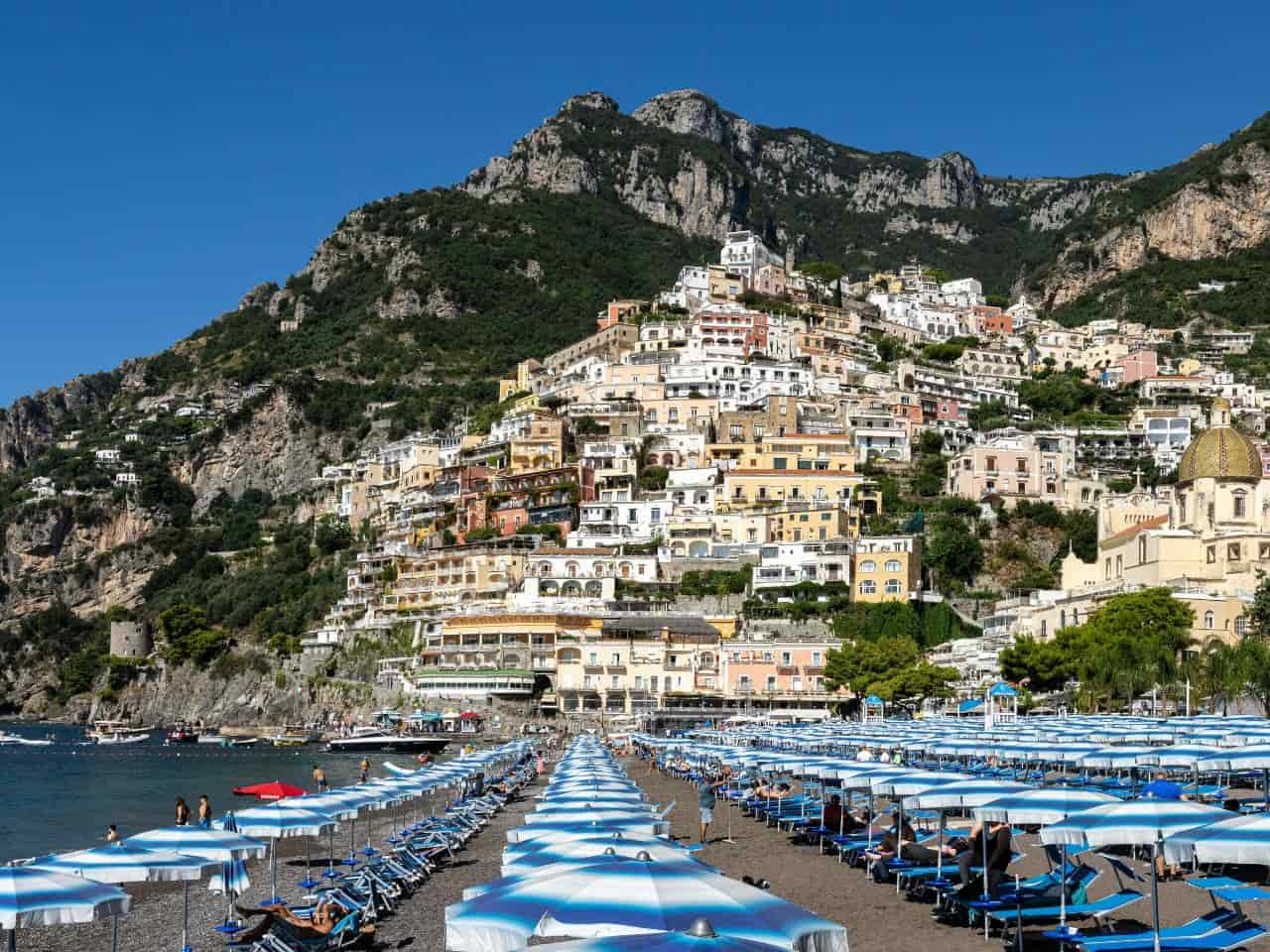
Pro Tip: Bring water shoes for the pebbly shore, sunscreen, and a beach towel. If you want to stay longer, renting a beach umbrella and lounge chair is worth it for ultimate comfort.
8. Discover the Emerald Grotto (Grotta dello Smeraldo)
If there’s one spot that feels like stepping into a hidden treasure on the entire Amalfi Coast, it’s the Emerald Grotto. Imagine a small boat gliding into a cave where sunlight hits the water just right, turning everything a magical, glowing green.
It’s like nature’s own light show, and the kind of experience that stays in your memory long after you leave.
The grotto is located in Conca dei Marini, a tiny village along the Amalfi Coast between Amalfi and Positano. It’s perched right on the coast, making it easy to combine with other seaside explorations.
Historically, locals used the cave to store fishing boats and goods, and it wasn’t until the early 20th century that it became famous for its emerald glow, attracting visitors from across the globe.
Best time of the day? Late morning to early afternoon is perfect, when sunlight pours into the grotto and makes the water sparkle brilliantly.
Don’t miss enjoying a short boat ride into the cave—gliding through the emerald waters is mesmerizing. Bring a camera for pictures, but keep it dry!
Pro Tip: Bring a light jacket—the grotto is cool inside even on hot days—and waterproof protection for your camera or phone. Visiting early helps avoid crowds, so you can enjoy the glowing waters in peace.
9. A Day Trip to Pompeii
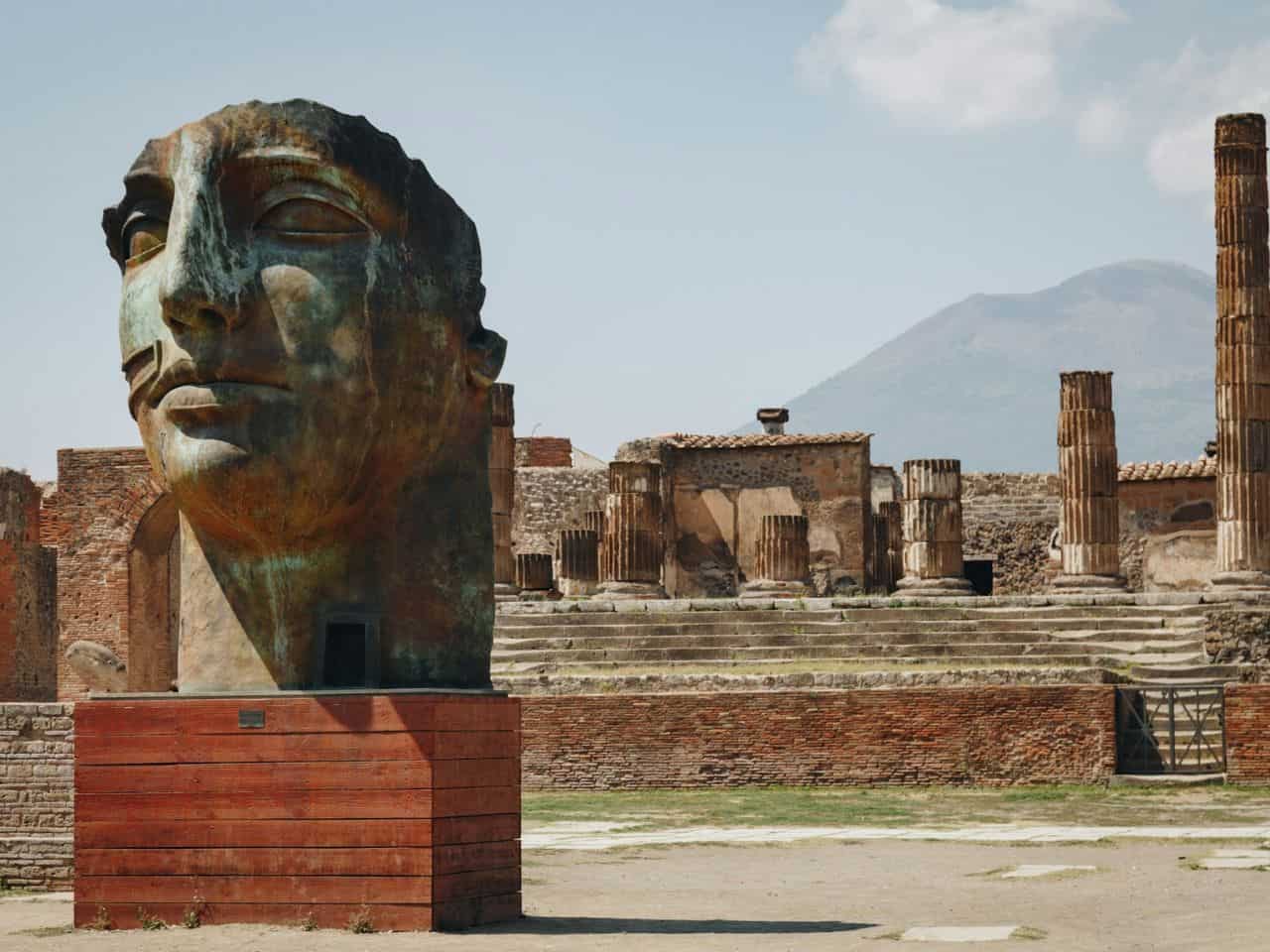
Pompeii was a thriving Roman city until Mount Vesuvius erupted in 79 AD, burying it in ash and preserving it for posterity. Walking its streets, you get a glimpse of life before the disaster—homes, baths, theaters, and shops still intact.
If stepping back in time excites you, a day trip to Pompeii must be in your list of things to do on the Amalfi Coast. You’ll wander ancient streets frozen in time, where Roman villas, frescoes, and marketplaces whisper stories of daily life almost 2,000 years ago.
It’s history you can touch, feel, and almost hear!
Pompeii is located near Naples, about 50 km northwest of the Amalfi Coast. From towns like Amalfi or Positano, it’s an easy day trip by road or train.
Best time of the day? Early morning is ideal to beat the crowds and heat, especially during summer. Late afternoon visits are quieter in the cooler months.
Try their local specialty snacks in the small cafés nearby, like a fresh sfogliatella pastry or an espresso to keep you energized for exploring.
Ways to reach Pompeii:
- By Train: Take the Circumvesuviana train from Sorrento or Naples to Pompeii Scavi station, which is just a short walk to the main entrance.
- By Car/Scooter: Drive via the A3 or coastal roads; parking is available near the archaeological site.
- By Tour Bus: Many Amalfi Coast tour operators offer guided trips including transport, entrance, and a local guide.
Pro Tip: Wear comfortable walking shoes and a hat, and bring water. The site is extensive, so plan at least 3–4 hours to explore fully. A small guidebook or audio guide helps bring the ancient city to life.
10. Cook with a Local Nonna

Forget guidebooks. The most authentic taste of the Amalfi Coast is cooked up in a local nonna’s kitchen. It’s a hands-on journey of kneading pasta, sharing stories, and feeling the heartbeat of generations in every recipe.
This experience doesn’t just fill your stomach; it captures the essence of “la dolce vita.”
Typically set in charming towns like Amalfi, Ravello, or Positano, these sessions are your gateway into culinary traditions guarded for decades.
Each nonna brings her own family twist to the classics, from fluffy gnocchi to tangy lemon delights, ensuring the food on your plate is steeped in personal history.
You’ll LOVE it!
11. Shop Ceramics in Vietri sul Mare
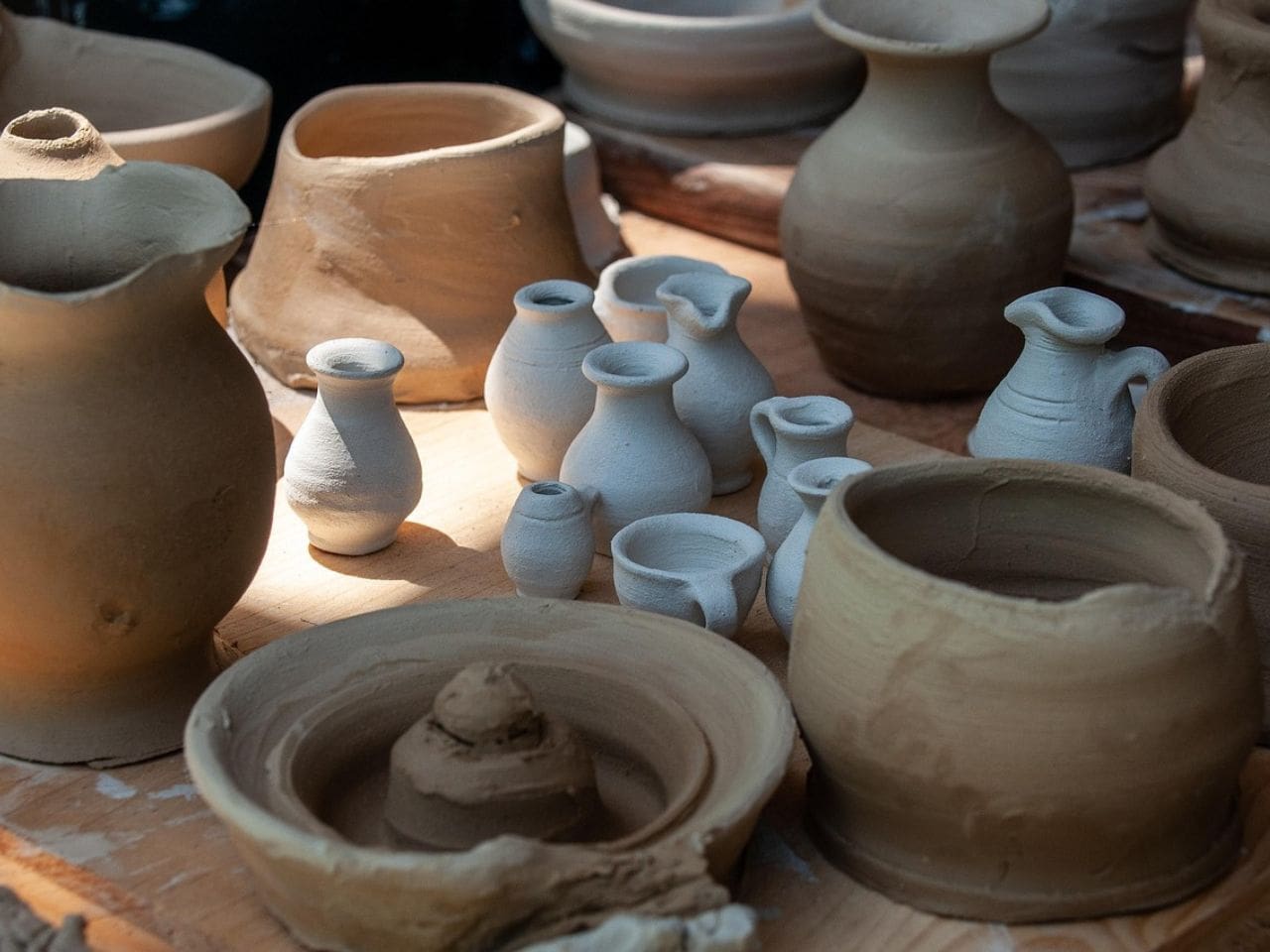
Perched at the very eastern gateway of the Amalfi Coast, just a short distance from Salerno, Vietri sul Mare offers a quieter, more authentic charm than its famous western neighbors.
This isn’t just a town; it’s a living gallery, a symphony of ceramics where the entire coastline seems to be painted in shades of sun-yellow, sea-blue, and vibrant lemon-green.
Its position on the hillside grants breathtaking views of the Gulf of Salerno, making a stroll through its lanes a feast for the eyes in more ways than one.
Vietri isn’t just known for ceramics; it is the historic ceramic capital of Italy, a title earned over six centuries. This is where artisanal families have honed their craft since the Renaissance, passing down techniques and secret glazes from parent to child.
The iconic designs—swirling patterns, whimsical fish, and bright floral motifs—aren’t just decoration; they are the visual language of the coast itself, telling stories of the sea, the sun, and the land.
Shop your favorite hand-painted tile or plate—it makes a perfect souvenir or gift.
Getting here:
- By Bus: SITA buses from Amalfi, Salerno, and other towns stop in Vietri.
- By Car/Scooter: Drive along the coastal road; parking is available but limited.
- By Ferry: Some Amalfi ferries stop at Salerno, a short walk or bus ride from Vietri.
Pro Tip: Bring cash for small shops, and allow time to explore winding streets—hidden treasures often appear in side alleys.
12. Explore the Fiordo di Furore
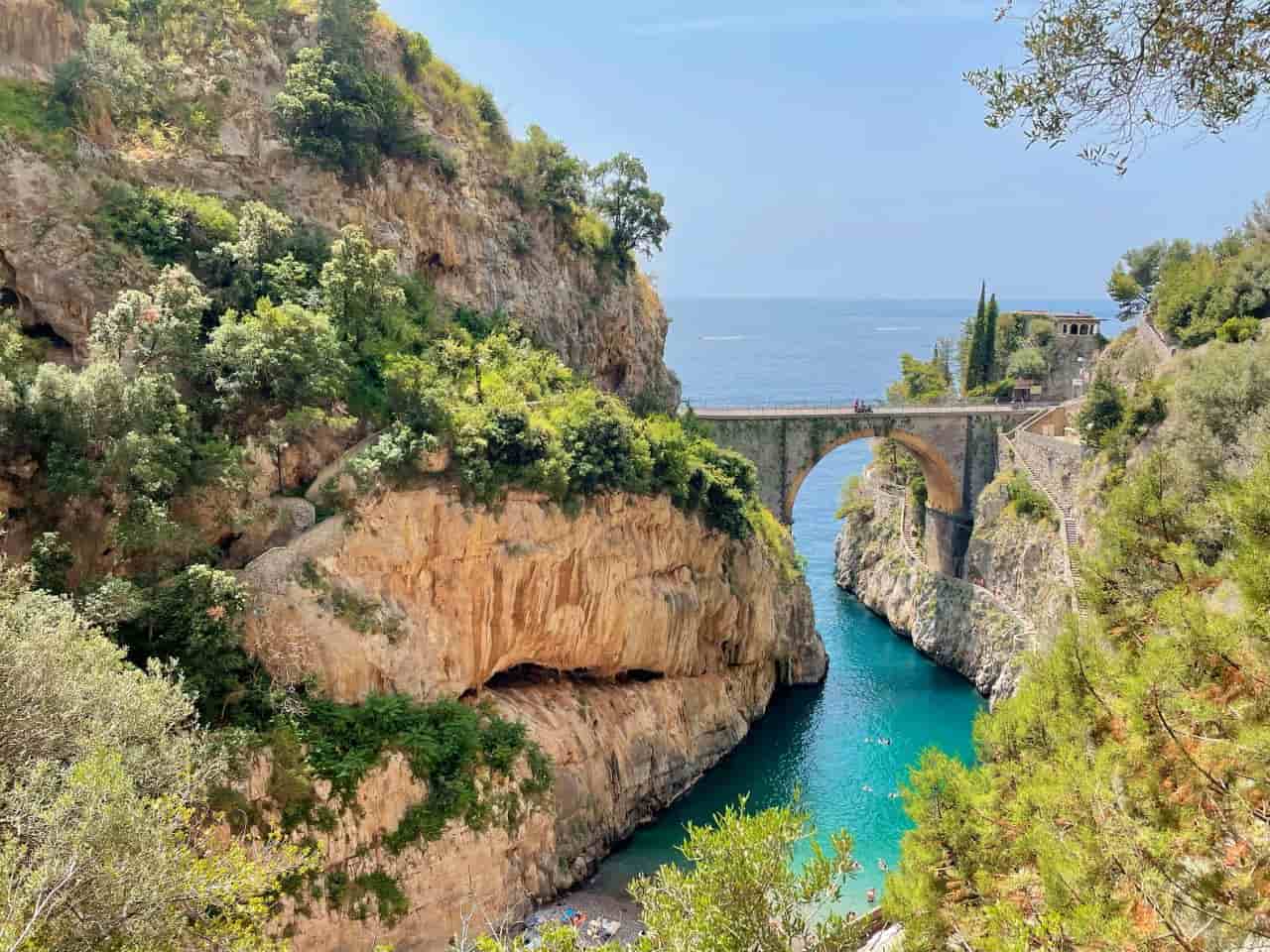
Often called Italy’s only fjord (though technically a ria, or submerged river valley), this unique attraction is a world away from the glamour of Positano.
The fjord is located between Amalfi and Conca dei Marini along the coastal SS163 road. You can hop on a SITA bus that stops near the fjord.
It’s a tiny fjord carved into cliffs with turquoise water at the bottom—it’s like discovering a secret world.
But isn’t just another beach; it’s a dramatic slash in the coastline where towering cliffs embrace a sliver of pebble shore and brilliant turquoise water.
Hence it is known as one of the most breathtaking hidden gems on the Amalfi Coast, yes you read that right!
You can literally take the staircase down to the pebble beach for a refreshing swim. The water here is often calm and incredibly clear, making it a perfect swimming spot surrounded by majestic rock walls.
This off the beaten path spot is best visited in the morning to enjoy the sunlight illuminating the cove or in the late afternoon for softer light.
Pro Tip: Wear sturdy shoes for walking around the cliffs and while there is a small beach bar, amenities are limited, bring water, snacks and a hat—it can get hot.
13. Hop On The Capri Island
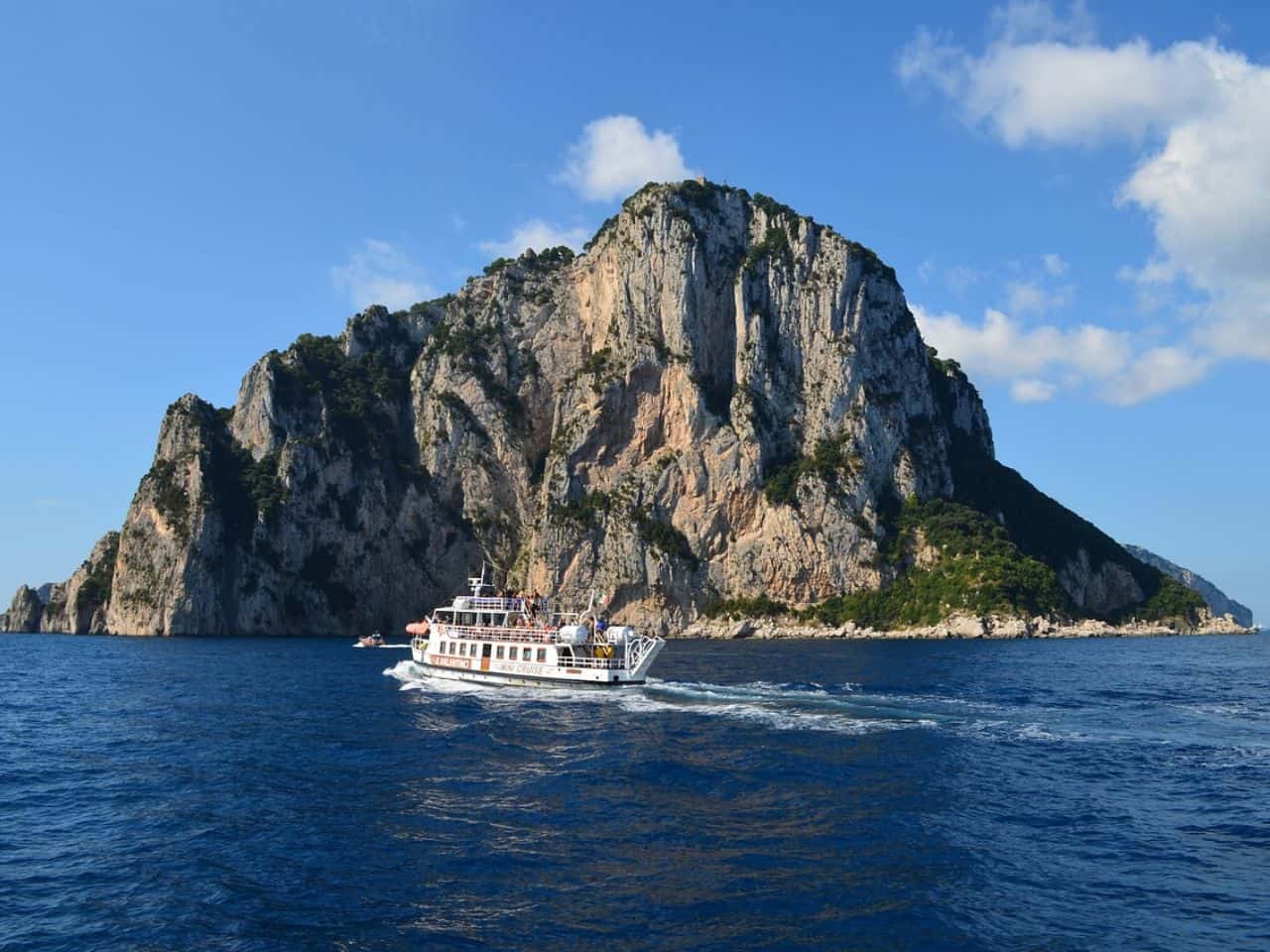
Capri sits right in the Tyrrhenian Sea, just off the tip of the Sorrentine Peninsula. It’s that beautiful, mountainous island you’ll see beckoning you from the coast.
Capri is incredibly popular. If glamour, sea caves, and luxury all appeal to you, Capri is a must-visit.
The journey is part of the adventure! The easiest and most enjoyable way is by ferry. You can hop on one from several towns:
- From Sorrento: The most popular route, taking about 20-25 minutes.
- From Positano or Amalfi: A scenic boat ride of about 30-50 minutes.
You’ll arrive at the Marina Grande, a colorful and bustling port that’s your gateway to the island’s magic.
My biggest tip? Get an early morning ferry. You’ll beat the biggest crowds and have the grotto and streets feeling more peaceful.
Staying until the late afternoon is wonderful, as the day-trippers start to leave and the island glows in the evening light.
Don’t miss these things to do on Capri Island.

14. Walk the Historic Streets of Atrani
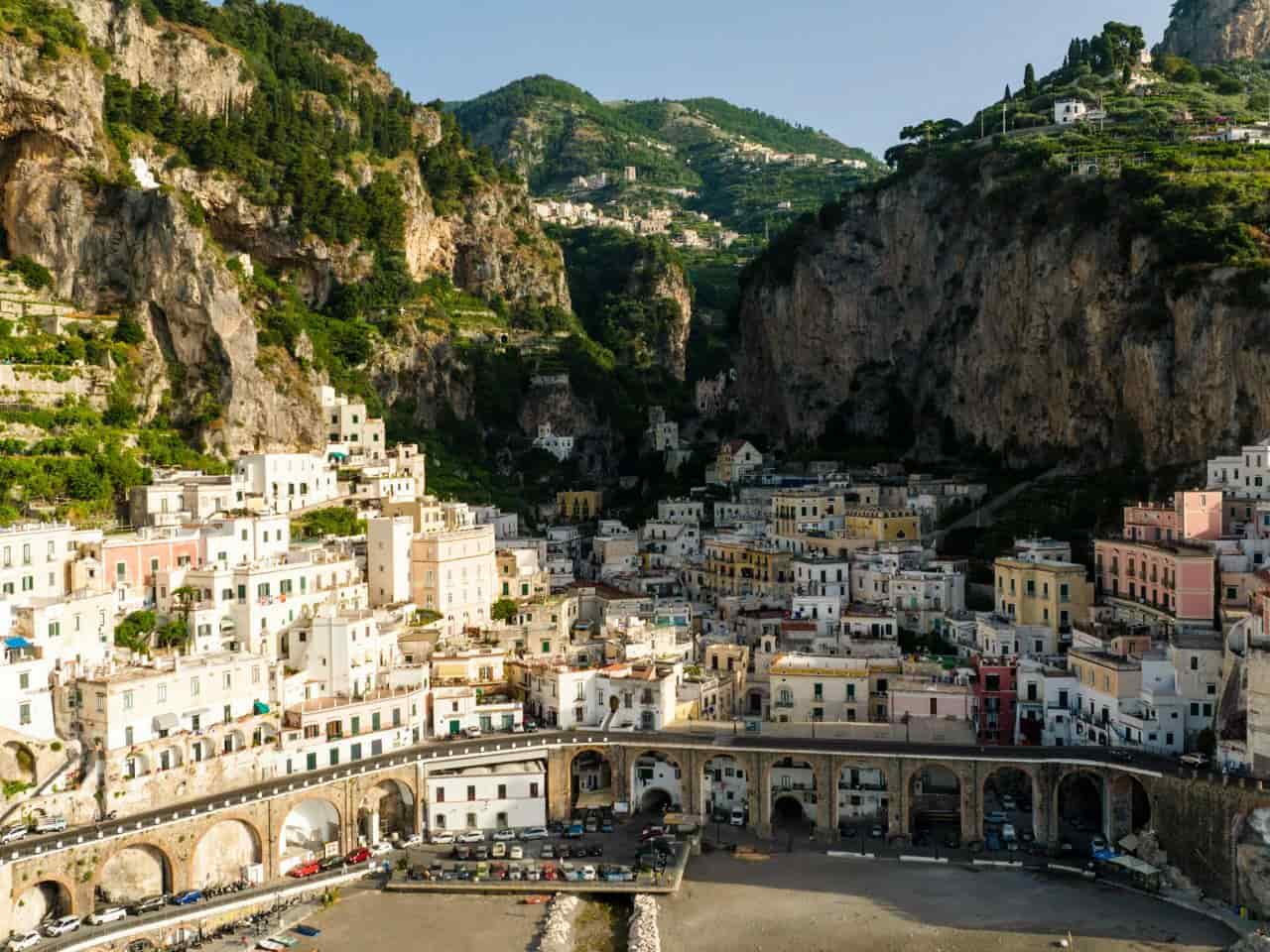
Just east of Amalfi, only a 5-minute walk from the town center, Atrani is magical.
You’ll literally experiencing narrow alleys, tiny piazzas, and pastel houses almost hugging the sea—it’s like stepping into a miniature Amalfi.
It was an independent maritime hub and the birthplace of Amalfi’s noble families. The town retains its medieval layout with cobblestone streets and small chapels.
This place isn’t just old; it was the summer residence for the powerful families of the Amalfi Republic. While Amalfi was the bustling commercial capital, Atrani was where the nobles came to relax.
Its layout, with tiny streets and arches, was designed for defense against pirates. You’re walking through a living, breathing medieval village.
I will say, skip the fancy menus. In Atrani, you want to eat what the locals eat.
- Sfogliatella: This iconic shell-shaped pastry, filled with sweet ricotta, is a must-try from a local pasticceria.
- Fresh Anchovies (Alici): Atrani has a tiny fishing fleet. Order alicii marinate (marinated fresh anchovies) at a family-run trattoria. They’re a local delicacy and unbelievably good.
Pro Tip: After you explore the lower town, walk up the main staircase near the church. It will lead you to a breathtaking viewpoint looking down over Atrani’s terraced rooftops to the sea.
This is the photo that will make your friends ask, “Where IS that?!”
WANT TO EXPLORE MORE?
Sign up for my newsletter and I will email you every time I have something new to say!
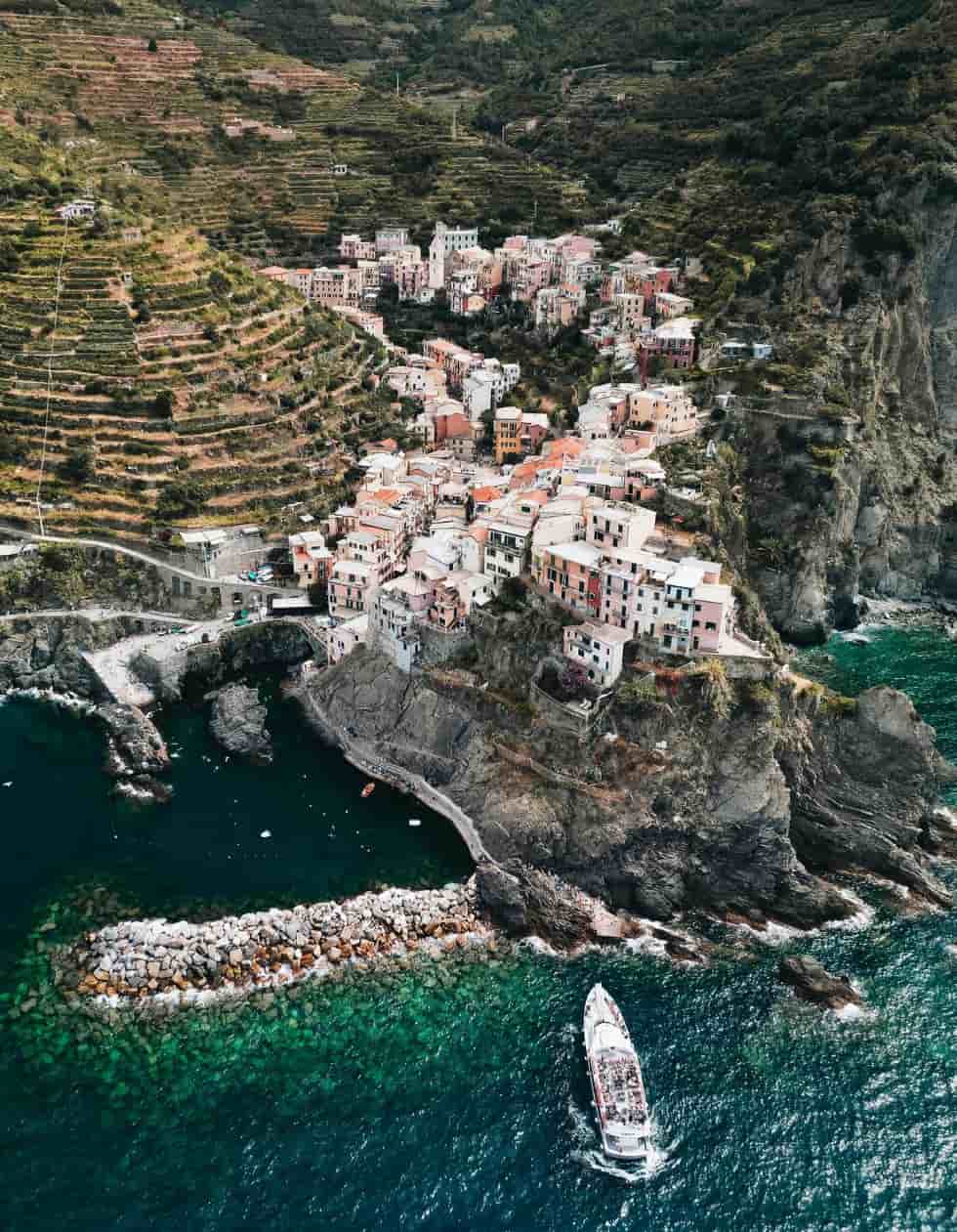
15. Watch the Sunset from Praiano
If there’s one moment that defines your whole journey of the Amalfi Coast, it’s watching a sunset in Praiano.
This place sits perfectly between the two big stars, Positano and Amalfi. Because it’s tucked into the cliffside rather than sprawling down to a big beach, it feels more like a peaceful village where real people live.
This central spot is exactly what makes its sunsets so spectacular—you’re facing due west, with nothing but open water in front of you.
You’ll feel Praiano as Positano’s quieter, more relaxed cousin. It’s perched right in the middle of the coast, which means it gets front-row, uninterrupted views of the sun dipping into the Mediterranean Sea.
It’s not just a thing to do; it’s a feeling you’ll carry with you forever.
For me, no list of things to do on the Amalfi Coast is complete without mentioning the magic of Praiano —it’s breathtaking.
Catch a SITA bus from any major town like Amalfi, Positano, or Sorrento. Just tell the driver “Praiano” and find a seat on the right-hand side for amazing views. The bus drops you off at various points in the town, and from there, you can explore on foot.
Never miss to accompany with an Aperol Spritz or a glass of local wine while the sun dips—it’s the perfect finale to a day on the Amalfi Coast.
Pro Tip: Bring a light jacket or sweater—it can get breezy on cliffside terraces, and don’t forget your camera for unforgettable sunset shots.
How To Reach The Amalfi Coast?
Step 1: Fly into Naples (Napoli)
Begin your journey from Naples International Airport (NAP)—the closest major airport and the same city that once linked ancient traders to Amalfi’s powerful maritime republic.
From here, you’re only a couple of hours away from those legendary cliffs and pastel towns.
Step 2: Pick Your Perfect Route
- Train + Bus/Ferry Combo
- Take a quick train to Sorrento or Salerno from Naples main train station, Stazione Centrale.
- From Sorrento, hop on the SITA bus or catch a ferry that glides past colorful villages.
- From Salerno, ferries and buses run directly to towns like Amalfi and Positano.
- Bonus: Ferries give you that unforgettable first view of the coastline rising from the sea.
- Take a quick train to Sorrento or Salerno from Naples main train station, Stazione Centrale.
- Private Transfer or Rental Car
- Want the freedom to stop for photos? Hire a driver or rent a car and follow the famous SS163 Amalfi Drive.
- Every curve reveals terraced lemon groves and centuries-old watchtowers.
- It’s breathtaking—but be ready for narrow roads and sharp turns.
- Want the freedom to stop for photos? Hire a driver or rent a car and follow the famous SS163 Amalfi Drive.
Step 3: Savor the journey
No matter which route you choose, don’t rush. It’s not just transportation; it’s your first real taste of Amalfi’s rhythm.
When Should I Avoid Amalfi Coast?
The Amalfi Coast is breathtaking year-round, but timing matters if you really want to soak in the magic without stress.
So, here’s how you can plan to meet its beauty—not its crowds.
Times to Skip
The Sweet Spot to Visit
For that postcard-perfect experience, aim for the shoulder seasons:
During these months you’ll feel the coast’s slower rhythm—chatting with shopkeepers, savoring limoncello in a quiet piazza, and hearing only the sound of waves against the rocks.
FAQs
-
What not to miss in Amalfi Coast?
Don’t skip wandering the colorful lanes of Positano, visiting the stunning Duomo di Sant’Andrea in Amalfi, or soaking up views from Ravello’s villas and gardens. A boat trip along the coast or to Capri, tasting fresh limoncello, and exploring the Emerald Grotto are experiences you’ll remember forever.
-
How many days do you need in Amalfi Coast?
Ideally, spend 4 to 5 days to enjoy the Amalfi Coast at a relaxed pace. That gives you time to explore Positano, Amalfi, Ravello, and maybe a day trip to Capri or Pompeii. If you only have 2–3 days, focus on a couple of towns and a coastal boat ride.
-
Is the Amalfi Coast expensive?
Yes, the Amalfi Coast can be pricey—especially for hotels, restaurants, and transport in peak summer. But you can still enjoy it on a budget by staying in nearby towns like Minori, Maiori, or Salerno, using buses or ferries instead of taxis, and savoring local trattorias instead of fine-dining spots.
-
What is the prettiest part of the Amalfi Coast?
I will say Positano is the prettiest part of the Amalfi Coast. With its pastel-colored houses tumbling down cliffs, narrow streets filled with bougainvillea, and a beach that sparkles under the sun, it feels like a postcard brought to life.
